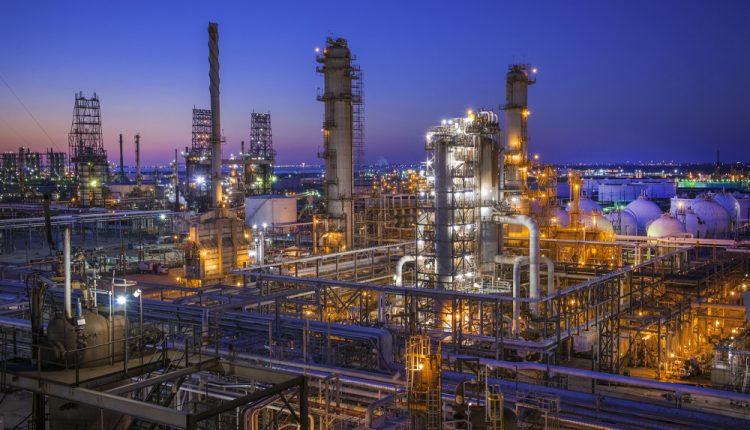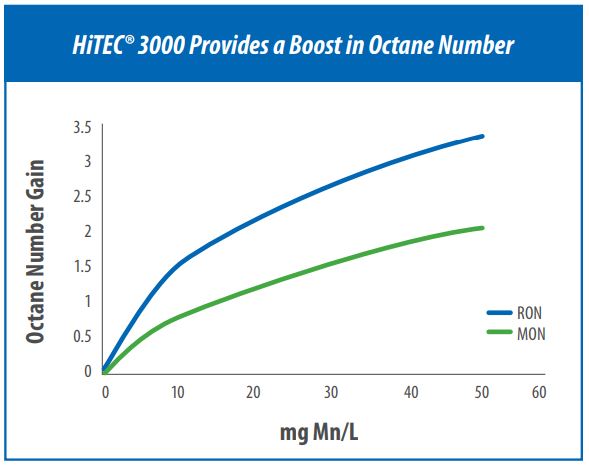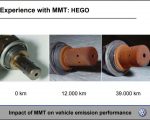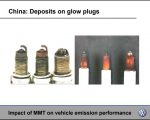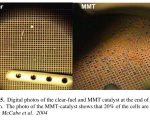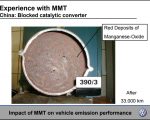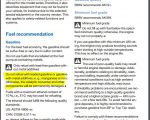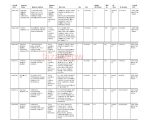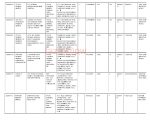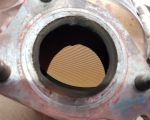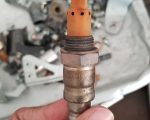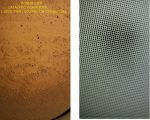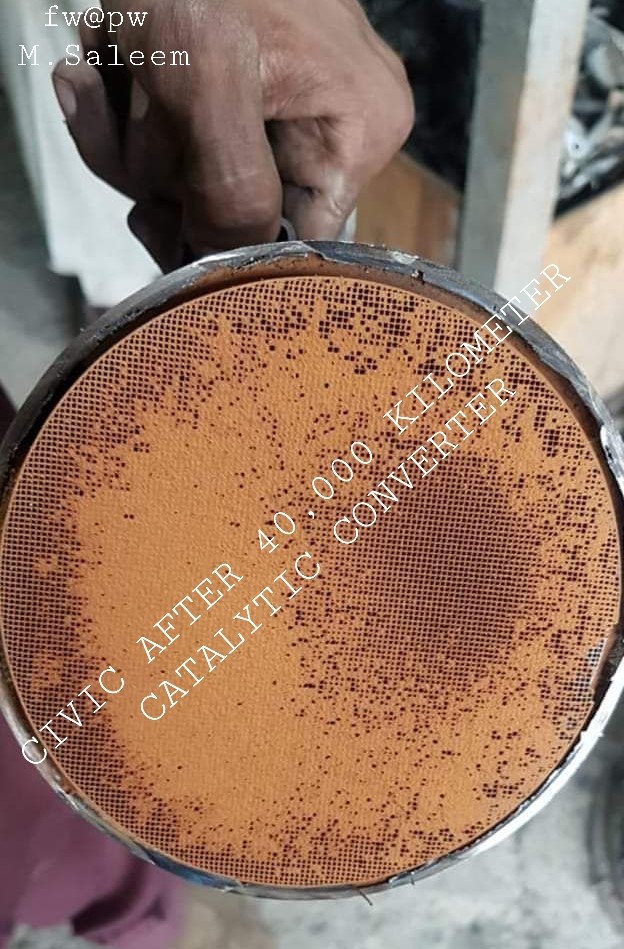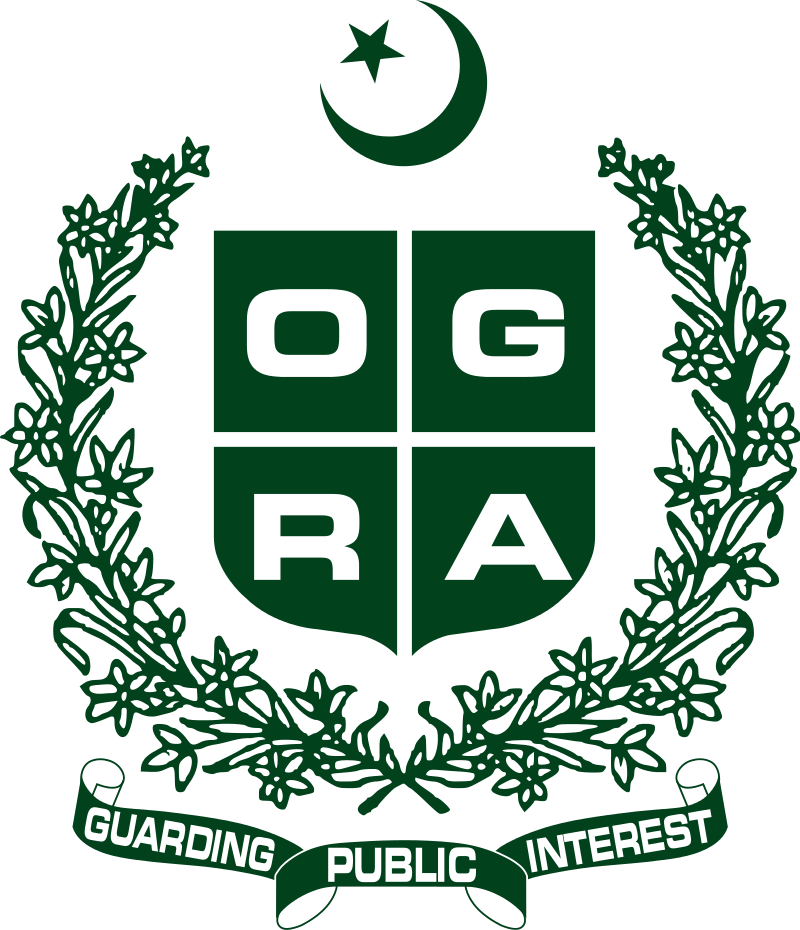** 𝟭𝟴𝟬,𝟬𝟬𝟬,𝟬𝟬𝟬,𝟬𝟬𝟬 ** 𝗠𝗶𝗹𝗹𝗶𝗴𝗿𝗮𝗺𝘀. Almost 180 Metric Tons of MMT was imported in Pakistan in year 2020. I mentioned it in milligram units because , there is a great deal of significance. This is the approximate quantity of “Methylcyclopentadienyl Manganese Tricarbonyl “ imported by local oil refineries/ distributors , blended into locally refined fuel. It went into your internal combustion engines of your vehicle and later into atmosphere , your lungs and blood streams . The refineries incudes PARCO/PAK ARAB REFINERY LTD , ARL /Attock Refinery Limited & NRL /National Refinery Limited.
After every 15 days, there is only one discussion and that is about fuel prices and unfortunately, consumer have no option beside embracing the prices. Although the regulator is actively busy in pricing the fuel, they are completely deep asleep about any quality control, quality assurance, mandating new protocols for fuel , its ingredients, emission standards. The local oil refineries are enjoying the party while consumers knowingly or unknowingly have no options.
Unfortunately in Pakistan gasoline has always been a news item, sometimes due to high prices, sometimes unavailability and most of the times inappropriate and fraudulent activity at the pumping stations. Mixing of kerosene with petrol by pump owners is not a surprise as well as mixing smuggled petrol of extremely low-quality fuel from bordering countries. On top of that intentional inaccurate measurement at pump stations is also not new. Overall a consumer is not generally happy using this basic need, but as there is no other option/alternative available, they have no choice.
MMT Issue:
Back in 2017, we posted a detailed article on the issue of MMT when it came to lime light. Before that no one knew if here is anything as such as MMT and its added to the local fuels by local refineries. The issue started in 2016/17 , when Honda Atlas made a complaint to OGRA about their investigation about the RON 91/92 fuel being sold at local pumps with very high concentration of MMT additives. Honda was investigating the causes of the extensive knocking in their newly released Civic Turbo back then and for the purpose the local fuel was also tested. An independent testing at a German laboratory showed excessive % of MMT in local fuel.
There was a lot of hue and cry back then and later OGRA and HDIP/ Hydrocarbon Institute of Pakistan also ran some tests and found that local fuel has as much as 63 milligrams of MMT while in some cases above 300 milligrams. This was bombshell announcement. In response to Honda Atlas complaint; Oil Companies Advisory Council “OCAC” along with oil marketing companies “OMC” and oil refineries met together in a meeting and threatened Honda Atlas to withdraw the complaint. Let’s learn in depth about MMT one more time .
Background:
The octane rating of petrol tells us about the stability of fuel against premature ignition under load that is compression in case of an engine. To get this resistance, oil refineries add various additives during the production of the fuel. We can say that higher the octane rating, more it can be compressed without ignition. Tetraethyl lead was discovered as a very effective Octane booster in 1920’s and was blended with fuel to increase the octane number to a required level. It was a cheap way to boost the octane number as mixing was not a very complicated process at refineries.
Experts on environment and health at that time started voicing against its use as it was found that high concentration of lead is releasing into the air. Inhalation of this air with high percentage lead was resulting in neurological disorders especially in children’s. The lead remained in use till 1970 when enough evidence surfaced that its use is damaging the environment, human life as well as damaging the emission system of vehicles. It should be noted that back in 1970’s when emission standards were not that strict but even then it was declared extremely dangerous. By 1973 a ban came into effect in the US over the use of lead-based additives. Since 2009 the entire production of gasoline across the globe is lead-free.
When lead-based additives went out of business, the producers started looking for an alternative. The MMT, “Methylcyclopentadienyl Manganese Tricarbonyl” came into existence. Refineries around the world started using it as like lead it was a cheap additive and the easiest way to blend into the gasoline for octane number enhancement. Refineries have been using MMT because it does not need any special changes to operation and production procedures of the refineries as well as equipment. On average a single drop of MMT in a liter of fuel can increases octane number by two.
AFTON Chemicals, a US-based firm is the largest producer of MMT and a commercial product named HITECH 3000 is the most well-known product being used. You can see in the attached table graph that addition of 10Mg of MMT increases octane by 1.5 while at 50Mg it’s over three. This shows that why refineries have shown interest in this additive over the years. I could not verify the price of this product or MMT in general as it is not available to the public.
Pakistan import data shows that this very same product is also being imported into the country. Interesting fact is that the same company who used to sell LEAD based additives globally and was the market leader, now sells the MMT.
MMT Effect on Health and Environment:
When gasoline burns in engine and gases emit from the tailpipe, these additive release manganese particle in the atmosphere. When inhaled by humans it can cause various respiratory diseases, and it gets absorbed into the blood, and it can damage the brain. Research has shown the impact of inhaled manganese on humans as well as animals. Many metals including manganese are important for the human body functions including bone development, but their concentration is highly important. Liver in our body regulates the concentration of these metals including manganese. It is rich in brown rice, other leafy vegetables and fruits like pineapple.
Manganese deficiency is not common in humans, unlike iron. But when humans inhale a manganese-rich air, it enters lungs and then get absorbed into the bloodstream. From here it reached the brain and started collecting in different regions of brain and effect motors skills, emotions & learning. Manganese also enters into the atmosphere as manganese sulfate when it comes out of the vehicle exhaust systems, and these compounds absorb in human blood much faster when inhaled.
Extensive studies have been performed on the effect of manganese on a human body and more widely known is the one performed at the University of Kentucky in 2004. The report confirms with compelling evidence that airborne manganese poses serious health risk. Not only this, a study performed by experts from Pakistan Medical Research Council back in 2005 confirmed the same and recommended that use of lead and manganese additives in gasoline should be evaluated as air containing dust particles rich in manganese may affect blood manganese levels. Parkinson disease, as well as other reproductive issues, has been related to the higher concentration of manganese and its compounds found in the atmosphere.
It is to be noted that vehicle tailpipe emissions are the major contributor to this concentration in the atmosphere. The United States Environmental protection agency, as well as World Health Organization, has already declared manganese as a hazardous air pollutant and it’s a serious neurotoxin. Many experts believe that danger related to manganese is not less than that of lead-based additives. The declaration at the end of convocation held at University of Brescia by ” International Commission on Occupational Health” in 2006 was as follows.
“𝘛𝘩𝘦 𝘢𝘥𝘥𝘪𝘵𝘪𝘰𝘯 𝘰𝘧 𝘰𝘳𝘨𝘢𝘯𝘪𝘤 𝘮𝘢𝘯𝘨𝘢𝘯𝘦𝘴𝘦 𝘤𝘰𝘮𝘱𝘰𝘶𝘯𝘥𝘴 𝘵𝘰 𝘨𝘢𝘴𝘰𝘭𝘪𝘯𝘦 𝘴𝘩𝘰𝘶𝘭𝘥 𝘣𝘦 𝘩𝘢𝘭𝘵𝘦𝘥 𝘪𝘮𝘮𝘦𝘥𝘪𝘢𝘵𝘦𝘭𝘺 𝘪𝘯 𝘢𝘭𝘭 𝘯𝘢𝘵𝘪𝘰𝘯𝘴. 𝘛𝘩𝘦 𝘥𝘢𝘵𝘢 𝘱𝘳𝘦𝘴𝘦𝘯𝘵𝘦𝘥 𝘢𝘵 𝘵𝘩𝘦 𝘉𝘳𝘦𝘴𝘤𝘪𝘢 𝘞𝘰𝘳𝘬𝘴𝘩𝘰𝘱 𝘳𝘢𝘪𝘴𝘦 𝘨𝘳𝘢𝘷𝘦 𝘤𝘰𝘯𝘤𝘦𝘳𝘯𝘴 𝘢𝘣𝘰𝘶𝘵 𝘵𝘩𝘦 𝘭𝘪𝘬𝘦𝘭𝘪𝘩𝘰𝘰𝘥 𝘵𝘩𝘢𝘵 𝘢𝘥𝘥𝘪𝘵𝘪𝘰𝘯 𝘰𝘧 𝘮𝘢𝘯𝘨𝘢𝘯𝘦𝘴𝘦 𝘵𝘰 𝘨𝘢𝘴𝘰𝘭𝘪𝘯𝘦 𝘤𝘰𝘶𝘭𝘥 𝘤𝘢𝘶𝘴𝘦 𝘸𝘪𝘥𝘦𝘴𝘱𝘳𝘦𝘢𝘥 𝘥𝘦𝘷𝘦𝘭𝘰𝘱𝘮𝘦𝘯𝘵𝘢𝘭 𝘵𝘰𝘹𝘪𝘤𝘪𝘵𝘺 𝘴𝘪𝘮𝘪𝘭𝘢𝘳 𝘵𝘰 𝘵𝘩𝘢𝘵 𝘤𝘢𝘶𝘴𝘦𝘥 𝘣𝘺 𝘵𝘩𝘦 𝘸𝘰𝘳𝘭𝘥𝘸𝘪𝘥𝘦 𝘢𝘥𝘥𝘪𝘵𝘪𝘰𝘯 𝘰𝘧 𝘵𝘦𝘵𝘳𝘢𝘢𝘭𝘬𝘺𝘭 𝘭𝘦𝘢𝘥 𝘵𝘰 𝘨𝘢𝘴𝘰𝘭𝘪𝘯𝘦. 𝘐𝘯 𝘭𝘪𝘨𝘩𝘵 𝘰𝘧 𝘵𝘩𝘪𝘴 𝘪𝘯𝘧𝘰𝘳𝘮𝘢𝘵𝘪𝘰𝘯, 𝘪𝘵 𝘸𝘰𝘶𝘭𝘥 𝘣𝘦 𝘦𝘹𝘵𝘳𝘦𝘮𝘦𝘭𝘺 𝘶𝘯𝘸𝘪𝘴𝘦 𝘵𝘰 𝘢𝘥𝘥 𝘮𝘢𝘯𝘨𝘢𝘯𝘦𝘴𝘦 𝘵𝘰 𝘨𝘢𝘴𝘰𝘭𝘪𝘯𝘦.”
Effects on Automobiles:
Besides dangers to humans explained earlier, these octane boosting additives have risen a red flag. Automakers have released various studies which show that these manganese-based additives are harming engine components as well emission system and severely hurt the overall performance of the vehicle. These additives are a major cause of catalytic converter blockage and reducing its efficiency and eventually resulting in its complete failure. Due to blockage of the catalyst within catalytic converter back pressure increases resulting in a wide variety of mechanical and performance issues. The oxidized manganese gets attached to all the exposed surfaces of the engine which includes spark plugs and oxygen sensors thus reducing their efficiency and premature failure.
Misfiring spark plugs is common phenomena due to these additives which result in unwanted emissions in shape of unburnt hydrocarbons and carbon monoxide. These additives also affect the working of the oxygen sensor which is part of the emission system. Use of these harmful additives cause poor fuel economy and engine performance beside damage to other components.
Automakers around the world Alliance of Automobile Manufacturers “AAM” did perform a multi-year study [6-year testing program started in 1996 ] concluded in 2002 and found that addition of these additives poses a risk to their vehicle and increased warranty cost. Overall emissions [ carbon monoxide, hydrocarbons, Nitrogen oxide] for the test vehicles after 100,000 miles testing with MMT based fuel increased between 31% to 37% when compared with test vehicle free from MMT based fuel. In Ford motors own research, they found that reddish brown deposits within the engine combustion chamber as well as seen on the exhaust system is not other than the manganese.
In real life comparison, when the same vehicle running in countries with MMT based fuel were compared with the one without MMT, the number of catalytic converter replacement claims were high in countries where MMT is used. In addition to the catalytic converter, spark plugs and oxygen sensor incidents were also very common. Regardless of engine type and design, metal additives like MMT are resulting in damage to the vehicle’s emission control system.
Automakers around the world have reached to the same conclusion that MMT based fuel poses an adverse effect on their vehicles and with strict required emission standards in place, it’s very difficult for them to meet those standards if metal-based additives like MMT is added. User manual strictly prohibits use of gasoline with MMT. Below you can find screenshots from Toyota Corolla, Honda Civic, BMW X1, owners manual in this regard. So far and so its declared harmful.
Statistically , as per data provided by car companies and independent research work, warranty claims for catalytic convertor and other emission control components have been reduced by a huge percentage after introduction of strict regulation regarding use of MMT.
Automakers and healthcare professionals were skeptical since the introduction of the MMT. Dozens of studies by professionals from various sectors concluded that MMT is something they don’t want. The regulatory bodies in United States, Canada, and Europe were approached with extensive, compelling evidence with one objective; to declare MMT unfit for use. In the US , Environmental Protection Agency agency limits the use of MMT in gasoline as an octane booster to MAXIMUM 8.3mg MN/L while its use was completely banned in reformulated petrol sold in urban cities like New York, Los Angeles and so on. There was a full ban on MMT use in effect in California since 1976.
Public Pressure:
Due to public criticism and extreme pressure from different agencies including car makers, almost all refineries switched to ZERO concentration of MMT all across the United States. Now although as per law a maximum of 8.3mg MN/Liter is allowed, petrol with MMT could hardly be found even in states where its allowed to the maximum threshold. Today there is less than 1% supply in the United States is with MMT [maximum allowable concentration]. In Canada where refineries were using MMT, voluntarily dropped using MMT since 2004.
In the European Union, the use of MMT reached European Court of Justice when AFTON, the largest MMT producer filed a petition for allowing its use. In court case back in 2010, European Court of Justice upheld EU limits of MMT use to a maximum of 2mg Mn/ liter starting January 1, 2014. Although a limit has been set, oil refineries have altogether removed its use. The EU directive on the limits of MMT can be read here. As per EU directive, if a fuel contains a metal additive, a note should be placed at petrol pumps mentioning its use so that a customer should know about it. The court even rejected the AFTON’s complaint about a legal requirement that all fuel containing MMT bear the label “contains metallic additives.”
Even in our neighboring India, the use of MMT is at zero concentration since 2004. Even in China where emission standards are not that strict maximum of 6mg Mn/L is regulated since 2008 in Beijing while maxing of 16mg Mn/L in rest of China. Fast forward today; MMT use is almost negligible, or almost none in Europe, US, Canada, either its banned or concentration of its use is limited to a certain degree. MMT is not approved for use in Germany while it is not used Japan at all. In below table, you can find the legal status of MMT back in 2008 for some countries, and you will see that in various cases it has been regulated. This reflect the concentration level and legal status of MMT which is effective almost 13 years .
In 2008, a coalition of Asian countries working for cleaner fuel and air funded by Asian Development Bank said ;
“Prominent health experts have raised serious concerns regarding the potential adverse health effects of metallic additives such as MMT and ferrocene, along with their potential adverse impacts on vehicle emissions and emission control system components. Therefore, the environmentally responsible approach for Asian countries is to apply the precautionary principle for these metallic additives and to not use them until and unless the scientific and health studies show that they are safe”.
International Council on Clean Transport “ICCT” in its September 2004 report said that, the use of MMT in developed world is almost diminished while in case of developing word which Includes Pakistan as well, MMT producers including AFTON Chemicals, the world largest producer of MMT , are running a public relations and marketing campaign in favor of MMT and declaring it a legal additive and is allowed for use. Although the statement is true but in reality its not entirely accurate because the producer does not share details on its use, quantity sold in various countries as well as concentration.
Fuel Standard:
International Organization of Motor Vehicle Manufacturers “OICA” which comprises of all major car/commercial vehicles manufacturers as well engine manufacturers had established World Wide Fuel Charter in 1998. World-Wide Fuel Charter Committee is made up of representatives of Auto Manufacturers from Europe (ACEA), the USA (AAM) and Japan (JAMA) and Engine Manufacturers (EMA). While there are associate members from countries where these vehicles are assembled. The purpose of this charter is to standardize the quality and specification of gasoline and diesel fuels across the globe to meet required emission standards and fuel economies.
The charter meets every few years and releases most up to date specification requirements for gasoline and diesel fuel concerning emission standard across various regions. Currently, the charter enforce was released back in October 2019. Both gasoline and diesel have been divided into five main categories. All the categories do not allow intentional additions of any metal-based additives which include MMT. Car manufacturer across the globe [Japan, Europe, North America] recommend and require fuels which meet the WWFC recommendations/ specifications.
The current active World Wide Fuel Charter “WWFC” can be read here > WWFC Current Charter
MMT in Pakistan:
HIDP/ Hydrocarbon Institute Of Pakistan and independent testing by German lab engaged by Honda Atlas confirmed , as much at 63-milligrm per liter and in some cases above 300 milligrams of manganese content per liter of petrol as per 2017/18 test reports. The additive which is slapped with a BAN, highly regulated or not used at all overseas like even ZERO % concentration in INDIA , is highly welcomed here in Pakistan and no one is bothered about it. This hazardous MMT additive is imported by local oil refineries and is used regularly.
See the attached image of Honda City catalytic converter with less than 50,000 kilometers on the odometer. BEFORE & AFTER cleaning. Also the condition of spark plugs and catalytic convertor of a brand new civic with less than 9000 kilometers on odometer. In Pakistan, catalytic converter chocking , premature spark plug and fuel injector failure, extensive deposits in engine as well as poor fuel economy and engine performance is nothing new and almost every other brand and model owner experience it regularly.
Unfortunately in many cases car owners just remove the catalytic convertor as replacement is very expensive while in some cases they need to do a regular cleaning at aftermarket workshops , which is also subject of discussion for its effectiveness. Overall, the improper working of the emission system or removal of it cause increase harmful emission reaching our environment.
In 2016, Government of Pakistan deregulated the prices of High-Octane (HOBC). This allowed the refineries to sell their premium fuel at their own price. Part of the deregulation also required that elevate the octane rating of regular fuel from RON 87 petrol to 92. It was also decided that the new regular fuel as Octane 91/ 92 would be priced same as the older version 87 while 95 Octane can be priced as per oil companies own tariff.
To meet the government of Pakistan requirement for required octane rating RON-91/92 , refineries upgraded the RON-87 they were producing already by adding high level of MMT instead of upgrading the refinery process. It is believed that refineries started adding extensive amount of MMT to the 87 octane to raise the rating to the required level. Import of large quantity of the MMT in the country is obviously used by local refineries in increasing the octane rating of locally refined fuel.
As MMT is the cheapest way of enhancing the octane rating with addition of some amount, refineries quickly met the government regulations. Also this octane enhancement didn’t require any upgrades to refinery operation/ infrastructure up-gradation. Seems like although the deadline was met , the local oil refineries had no game plan in improving and upgrading their facilities since the new regulations of RON91/92 went in place and they were totally relying on using these harmful octane enhancing fuel additives.
When in 2017, a lot of discussion was ongoing on this topic, CEO for Oil Companies Advisory Council back then Ilyas Fazil said, he had not heard of manganese additives causing any problem in the industry, although the same additive is declared hazard by WHO and slapped with a BAN in California for almost 40 years and it’s also under strict watch and regulated in European Union.
President for Oil Companies Advisory Council back then , Mr Aftab Hussain said that all fuel being sold in the country is strictly in accordance with the approved specifications issued by the Ministry of Energy, Petroleum Division. Therefore, the question of the sale of poor quality fuel does not arise. It was told that local refineries do add MMT, a manganese-based metallic additive to fuel to enhance octane rating.
An OCAC Pakistan official in 2017 confirmed that there was NO limit on manganese content in the government’s standards for petrol in Pakistan BUT failed to share how much quantity was used by refineries in Pakistan. This was very alarming situation and such notions from an officials related to the industry was really questionable and concerning.
As I mentioned above, producer of MMT’s are targeting developing countries as their sales ground, reason being it is not welcomed in developed countries like US, Europe, Japan, Germany and so on many more . It’s extremely disappointing that Pakistan is still 20 years behind comparing other countries in the region as far as fuel standards and refinery processes. Not only metal additives like manganese are higher, but the high level of sulfur has also been reported. Newer engine designs and advanced emission controls for better performance and fuel economy do need better-refined fuel with appropriate additives; free from harmful metallic additives like manganese.
Proposed Guidelines In Pakistan :
After a very long deliberation among stake holders, it was later agreed that MMT concentration in Pakistan need to be regulated. This was really a very positive sign. It is pertinent to note that , back in September 2018, The Petroleum Division of Pakistan asked all the relevant agencies including OGRA, Hydrocarbon Development Institute of Pakistan (HDIP) & Oil Companies Advisory Council (OCAC) that the manganese concentration MUST be brought down to 40milligram / liter and it should be applicable for all fuel grades both locally refined and imported fuels by October 2018 .
It was also stated that starting November 1st 2018 , the manganese concentration must be reduced to 24mg/liter and a deadline of April 30, 2019 was proposed. It was also directed that by May 1, 2019 , all fuel grades both local or imported MUST be with ZERO level of MMT/ manganese.
Looking at the import data publicly available, it seems like no one is bothered to implement these direction , neither anyone from government agencies nor from the refineries OR they are intentionally not interested looking into this matter at all. 180 Metric Tons of MMT landed into the country in 2020 while 14 Metric Tons of it already reached Pakistan in January 2021.
Recommendations :
Government regulator must implement the proposed ZERO % MMT mandate as soon as possible as its already delayed. Beside increasing prices every few weeks and just sitting in their offices and enjoying samosa and chai all day long on tax payers money, it’s time to wake up and do something. MMT, and it adverse effects are damaging our health, environments and automobile engines forever and very long time. Government of Pakistan has introduced a so called EV policy to benefit the environment BUT the gasoline use in any country will not vanish especially in Pakistan anytime soon. Introducing EV policy on one hand while keeping a close eyes and ears on the implementation of newer global fuel and emissions standards is a complete eyewash and nothing more than making public stupid.
As mentioned earlier in the topic, a detailed gradual timeline for reducing the manganese content and eventually completely eliminating it from the fuel sold in Pakistan was proposed with deadline set for May 2019. Its almost near 2 year that the deadline has passed BUT there is no positive action in this regard and the harmful additives are imported and added. Seems like no government in the country has ever showed any interest in regulating and mandating newer protocols related to gasoline.
Before 2017, no one knew about MMT in Pakistan although globally its adverse effects on health and the automotive sector were extensively documented for decades. It’s extremely disappointing that even after knowing the issues and concerns with MMT, no real on ground work is being done in the country . There is no doubt that, we in Pakistan are very late in understanding this fact, but we still have time to understand the danger and act accordingly. All involved parties, Government, regulating agencies, scientific laboratories, environmental experts, automakers as well as refineries and oil marketing companies in Pakistan should sit together and make necessary arrangements and understand the facts and work together towards a better fuel and emission standards.
It’s time that refined/ produced petrol as well as diesel fuel, is standardized in line with the international standards. All refineries should produce or blend the fuel following the internationally accepted methods. Concerned authorities must follow internationally recognized World Wide Fuel Charter. The regulator must limit the use MMT in accordance with the acceptable international percentage.
Refineries need to make changes to their operation and production processes instead of using a cheap method of producing required octane grades. Refineries should prepare a roadmap towards all the required changes needed for the production of fuel without any metal additives. Refineries should not enhance the octane by cutting their cost and blending hazardous additives.
Refineries must use standardized fuel additives as per international fuel requirements for the deposit control , keeping fuel injectors, intake valves and other engine components clean for lower emissions, better fuel economy and vehicle performance and MUST NOT use any metallic additives. Government agencies MUST enforce the World Wide Fuel Charter currently effective since 2019.
Refineries and government must ensure that public health is protected as well as newer technologies for emission control systems in vehicles are not negatively affected by their products. The government should also work with car companies and establish emission standards and testing protocol. Government and regulator should re-evaluate the current specification for production of fuel and consult with local and international experts immediately and make necessary changes.
Fuel pumps across the country must display the Octane number with % of MMT on the dispenser, and a random inspection should take place time to time to evaluate the supplied gasoline not only for the quantity but quality as well. The regulators must audit import and use of MMT quantities to verify the concentration of this harmful additive. Alternatively, import of MMT should be strictly BANNED.
Some Oil Marketing Companies have started an import of RON92 fuel which is EURO 5. Although it is a good move BUT it does not solve the issue of MMT because , the imported fuel is not available all across the country and it still needs verification as far as MMT concentration. Random testing across the country should be performed on all fuel grades and level of MMT as well as any other harmful additive like even LEAD must be tested and posted publicly on OGRA website.
Secondly, and more importantly, government should reduce the import bill and improve the quality of the local blend and that is what being priced every 2 weeks and most of public / consumer is using.
OGRA/ Oil & GAS Regulatory Authority has a slogan ” Guarding Public Interest “. Its high time this slogan get into an active action.

